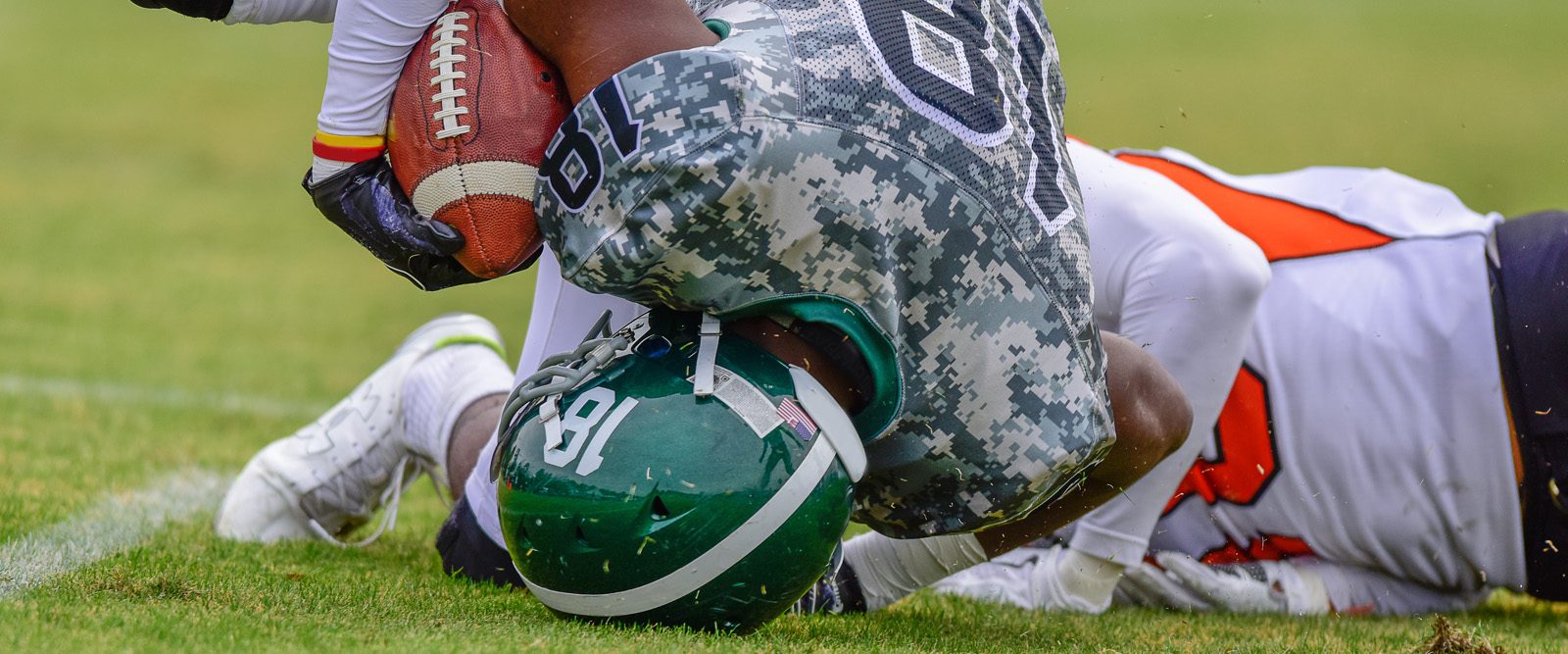What is Chronic Traumatic Encephalopathy (CTE)?
A neurologist explains what we know about this progressive brain disease that has been found in athletes who played contact sports like football.

Chronic traumatic encephalopathy (CTE) is a brain disease that has been linked to repeated blows to the head, which can cause brain injuries. The condition has gotten increasing attention because it has been found in some athletes who played sports that may involve repeated blows to the head — such as football, hockey, and soccer — and has raised questions about how safe high-impact sports are for the brain.
CTE is associated with dementia, personality changes like impaired judgement or short temper, and higher rates of serious mental health issues like depression, anxiety, or suicidality. But CTE can only be diagnosed after death with an autopsy of the brain. Retired professional athletes and high school athletes who played contact sports, often starting at a young age, have been found to have CTE.
“Experts are still trying to understand CTE and why some people develop it while others don’t,” says Dr. James Noble, a neurologist at NewYork-Presbyterian/Columbia University Irving Medical Center. “But someone who starts playing football at age 8 and stops at 18 has at that point 10 years of exposure to a high-risk activity and could accumulate hundreds, up to thousands of head impacts over that time. The concern is that this activity may cause CTE even at a young age.”
Health Matters spoke to Dr. Noble to better understand CTE and learn how to minimize the risk of developing this progressive condition.

Dr. James Noble
What is CTE?
CTE is a neurodegenerative disease that is caused by repeated head injuries over many years, most often found in people who played contact sports like football, hockey, or wrestling, or combat sports like boxing. Military veterans who have suffered concussions or multiple traumatic brain injuries due to blast explosions or combat can experience related but distinct brain changes also due to trauma. Most times symptoms appear years or decades after the repeated head injuries, and many people exposed to repeated hits to the head never develop symptoms suggestive of CTE.
What are the signs of CTE?
A person can experience memory or cognition problems, or there might be severe mood changes. Less often we see physical changes like problems with balance or coordination. But one of the biggest challenges with CTE is that there is no definitive way outside of an autopsy to clinically diagnose CTE and distinguish it from other causes of these symptoms. For instance, someone who plays football in high school might also show signs of depression, but of course that is common even in the absence of sports participation. So we can’t say if the mental health challenges were caused by or exacerbated by head injuries, or just occurred on their own.
How is CTE identified?
It’s hard to definitively connect CTE to neurological or behavior changes, but in the absence of another apparent explanation, we may suspect CTE as a primary or contributing cause, given the patient’s history of head injuries. We may also do neurological and imaging tests that give us more information, but distinguishing CTE from other common neurological problems can be especially challenging, especially as former athletes become older adults. Newer tools like high-resolution MRI, which is used mostly still in research, have helped us see more clearly that after repeated head injuries there are changes in the brain’s white matter — the highways that connect parts of the brain. But we need to develop better diagnostic tools to diagnose this disease while people are alive.
What do they look for in an autopsy to diagnose CTE?
In autopsies, pathologists look for evidence of damage to the brain. There are undulating peaks and valleys in every brain, and it is in the depths of these valleys – the sulci – where we often see changes linked to CTE. In that region, we can identify clumps of a brain protein called phospho-tau, which points to an injury having occurred there.
We also see the presence of microscopic clumps of phospho-tau in Alzheimer’s disease, but in CTE the clumping occurs in different general brain regions, to different degrees, as well as around small blood vessels, which are also subject to strains when there is a head injury.
The best way to prevent CTE is to avoid activities that cause head injuries, and athletes have a responsibility to tell a coach or trainer if they have concussive symptoms after a head injury.
Dr. James Noble
Do concussions cause CTE?
Not necessarily. Concussions are the most common type of head injury and many people have a concussion at some point in life. But for persons exposed to numerous head impacts over years, who may also occasionally experience a concussion, we think it’s the smaller, repetitive head impacts that are the main risk factor for getting CTE. These injuries add up, causing repeated stretching and pulling in the brain. In some athletes, it just so happens that the same activity causing a concussion causes these more frequent, smaller head impacts.
It’s important to remember that concussion is not the same thing as CTE. It’s fairly common for someone to get a concussion in their lifetime, often in childhood. Children fall while climbing trees or bump heads while on the playground. Most people recover from a concussion fully in a matter of weeks without any real risk of developing CTE. But it’s uncommon for most people to experience hundreds or thousands of head impacts in a lifetime. It is these repetitive hits that most often lead to CTE.
Why does it take years for this disease to progress?
We’re not yet sure. What is clear is that most exposures to repetitive head impacts occur in athletes and veterans at relatively young ages, rarely past early adulthood. The head injuries for the most part stop whenever someone ends their athletic career or is discharged from the military, yet the first symptoms associated with CTE may not occur until years or decades later. Also, we don’t have a clear enough understanding of why some people will develop the disease while others don’t, despite similar longstanding exposures to repetitive head impacts.
We do know there are observable brain changes on research MRIs that suggest that repetitive head impacts may not only cause brain injury but impede brain development during key periods of adolescence and early adulthood.
Is there a treatment for CTE?
Unfortunately, there isn’t, and there is no cure. Doctors will treat individual symptoms, like depression or anxiety, and we know things like staying physically active, socially engaged, eating a healthy diet and getting quality sleep will help keep the brain healthy during life. But with CTE, we try to use harm reduction strategies, such as educating people on the risks that could lead to the disease.
Can CTE be prevented?
The best way to prevent CTE is to avoid activities that cause head injuries. For high-contact sports, this means limiting contact to the head, and athletes have a responsibility to tell a coach or trainer if they have concussive symptoms after a head injury. It’s also important to know that there are no concussion-proof or CTE-proof helmets. In fact, most people to have ever been diagnosed with CTE wore helmets for many years. However, many helmets are very effective at preventing skull fractures and some forms of catastrophic brain injury.
Of course, participating in sports is good for people of any age. But the main concern right now is balancing athletic activity with safety in sports that are known to cause brain injury for some people. As of now, a big challenge is trying to prevent CTE when there’s no good way to make a clinical diagnosis in life. What we want to be able to know for sure is how much is too much for an individual athlete — at what point would it seem that the chance of developing CTE is just too risky to continue.
